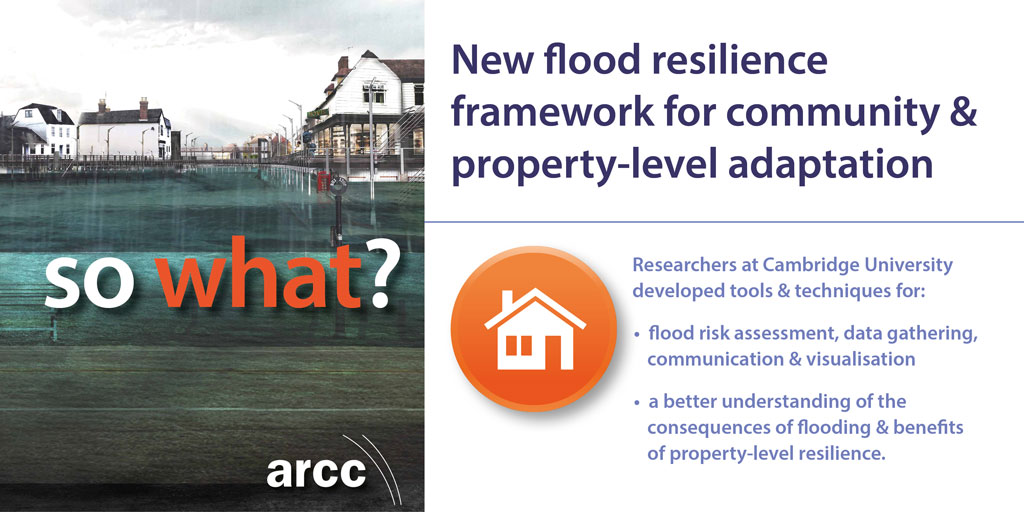Edward Barsley
Centre for Risk in the Built Environment, Department of Architecture, University of Cambridge
October 2013 to October 2017
Aim: With an increasing number of properties at risk of flooding, we urgently need to assess the resilience of buildings and consider the consequences and benefits of adaptation. Although efforts are underway to reduce the exposure of at-risk communities, there’s a disjoint between large scale adaptation / alleviation strategies and property-level adaptation. Without a detailed understanding of individual properties, flood risk thresholds and tipping points, decision-makers at both national and local levels remain unaware of the potential adaptation capacity of communities. The Retrofitting Resilience study and framework address this knowledge gap and can be used to evaluate both the current and future flood resilience of a community.
Objectives:
- Develop new tools & techniques to assess, gather data, communicate & visualise flood risk.
- Understand the tangible & intangible consequences of flood events, & the benefits of property level resilience (PLR).
- Consider the indirect impacts of flooding on; occupancy, accessibility, functionality of services such as waste, power & water, & placemaking.
- Explore the value of using scenario testing in a mixed-method research framework for assessing flood resilience in the built environment.
Main project outcomes:
- Recognised the importance of broader assessment of resilience and consider disruption to: access, occupancy, functionality of services – such as waste, power, water – and placemaking.
- The scenario based strategy used in this research stress-tested the community at a house, village and catchment level using spatial and visual communication tools for analysis and presentation of outcomes. This method helped to demonstrate the consequences of inaction to key stakeholder’s and the severity of threats they may be forced to endure.
- Our research found that adapting to lessen flood risk can act as a driver to encourage change and improve the quality of the built environment.
- Enhancing the flood resilience of communities can help lower the vulnerability of homeowners and properties at risk, reducing the cost, time and trauma of recovery whilst increasing community wellbeing.
- The framework proved successful in assessing both community flood resilience and as a tool for communicating the consequences and benefits of adaptation.
- Realised the value of scenario testing and mixed-method research in exploring alternate strategies for adaptation.


